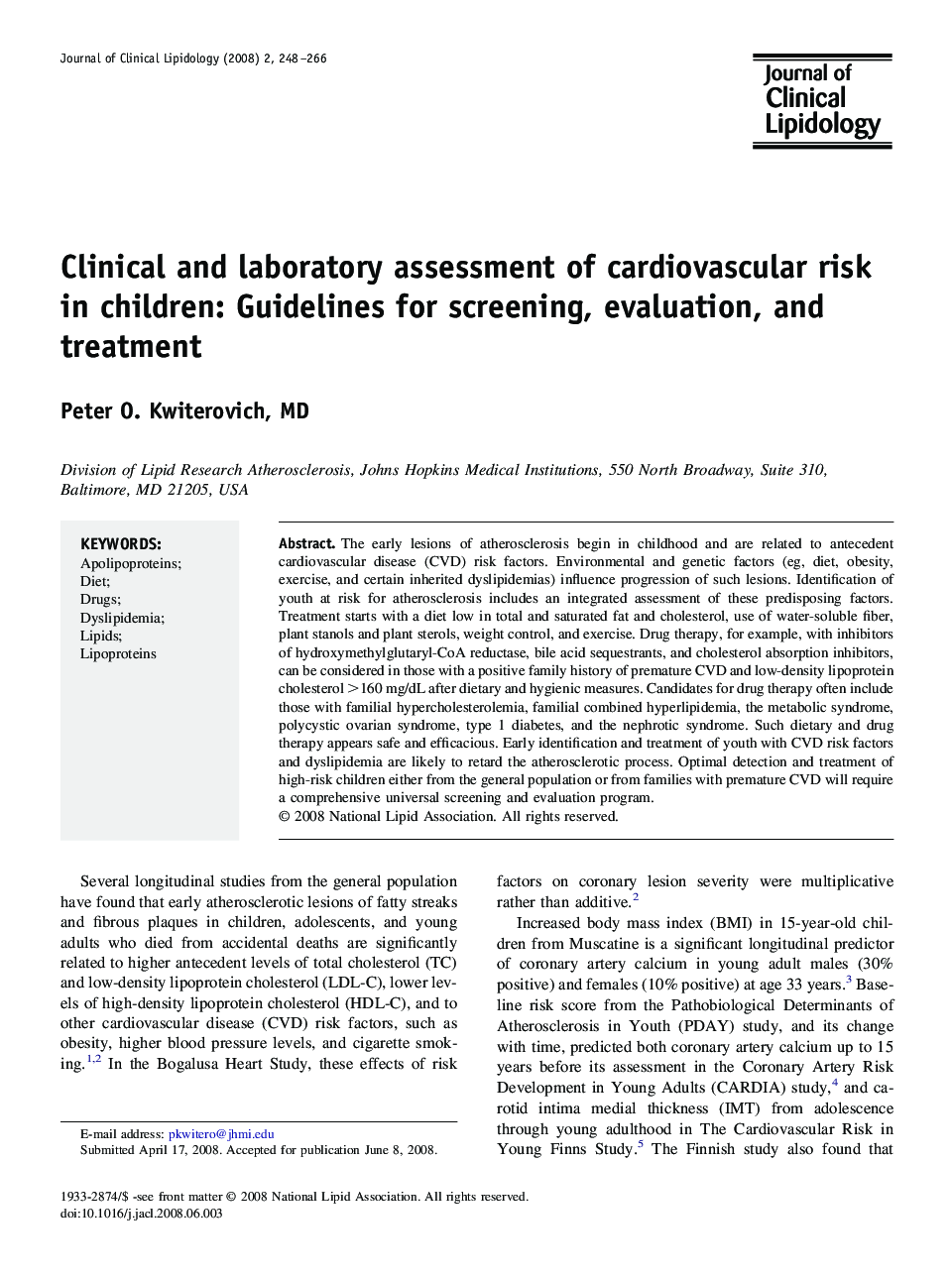| Article ID | Journal | Published Year | Pages | File Type |
|---|---|---|---|---|
| 2966897 | Journal of Clinical Lipidology | 2008 | 19 Pages |
The early lesions of atherosclerosis begin in childhood and are related to antecedent cardiovascular disease (CVD) risk factors. Environmental and genetic factors (eg, diet, obesity, exercise, and certain inherited dyslipidemias) influence progression of such lesions. Identification of youth at risk for atherosclerosis includes an integrated assessment of these predisposing factors. Treatment starts with a diet low in total and saturated fat and cholesterol, use of water-soluble fiber, plant stanols and plant sterols, weight control, and exercise. Drug therapy, for example, with inhibitors of hydroxymethylglutaryl-CoA reductase, bile acid sequestrants, and cholesterol absorption inhibitors, can be considered in those with a positive family history of premature CVD and low-density lipoprotein cholesterol >160 mg/dL after dietary and hygienic measures. Candidates for drug therapy often include those with familial hypercholesterolemia, familial combined hyperlipidemia, the metabolic syndrome, polycystic ovarian syndrome, type 1 diabetes, and the nephrotic syndrome. Such dietary and drug therapy appears safe and efficacious. Early identification and treatment of youth with CVD risk factors and dyslipidemia are likely to retard the atherosclerotic process. Optimal detection and treatment of high-risk children either from the general population or from families with premature CVD will require a comprehensive universal screening and evaluation program.
